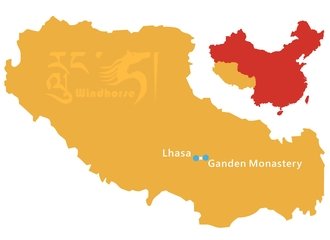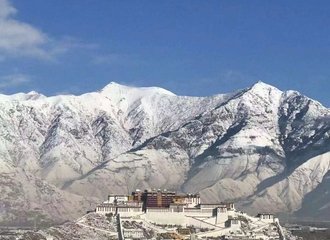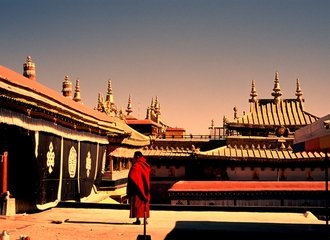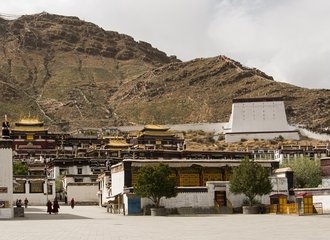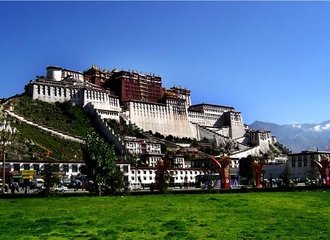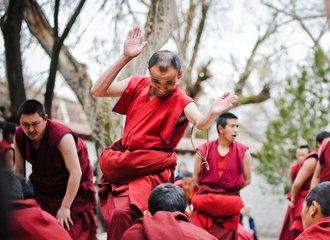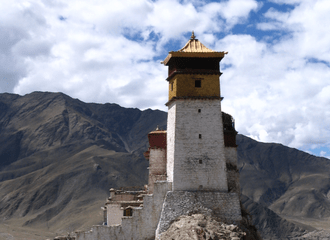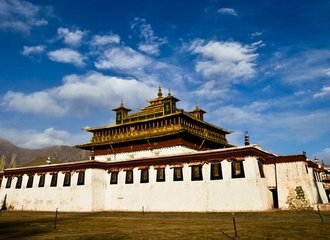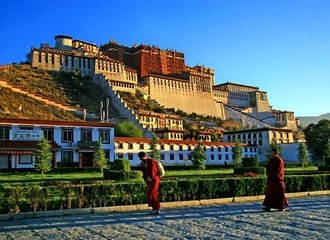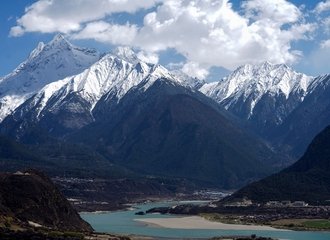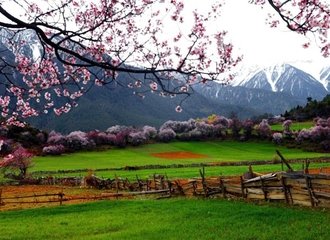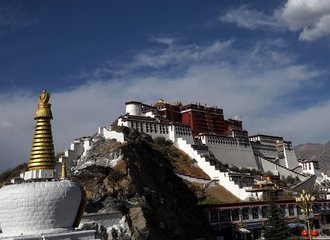Tsurphu Monastery
Quick Facts about Tsurphu Monastery
Location: Tsurphu Monastery is located in Tolung Valley, about 70 kilometers (43 miles) west of Lhasa.
Elevation: The monastery is situated at an altitude of approximately 4,300 meters (14,108 feet) above sea level.
Founding: Tsurphu Monastery was founded in 1187 by Düsum Khyenpa, the 1st Karmapa Lama, making it over 800 years old.
Architecture: The monastery complex includes a main assembly hall, several shrines, living quarters for monks, and stupas. Its architecture reflects traditional Tibetan Buddhist styles.
Cultural Heritage: The monastery holds numerous sacred relics, ancient texts, and artworks, making it an important center for Tibetan culture and religion.
Festivals: The monastery hosts various religious festivals, including the Cham Dance Festival, where monks perform traditional mask dances to purify the environment and bring blessings.
Pilgrimage Site: It is a major pilgrimage site for Tibetan Buddhists, who visit to receive blessings and engage in religious practices.
Overview of Tsurphu Monastery
Tsurphu Monastery serves as the traditional seat of the Karmapa, the head of the Karma Kagyu order of Tibetan Buddhism, situated in the northwest of Tölung Valley in Doilungdêqên District, Tibet Autonomous Region, China, around 70km west of Lhasa, at an altitude of 4,300 meters (14,108 feet). Its main assembly hall sits in the middle of the valley facing south and Tsurphu River and is embraced by the high mountains in the south, west, and north. The Reincarnation System of Living Buddha was born there and spread to other sects of Tibet Buddhism. It experienced enormous damage and reconstruction, but it still kept its primitive charm.
Tsurphu Monastery was founded in 1187 by Dusum Khyenpa, some 40 years after he established the Karmapa order in Kham, his birthplace. It was the third Karmapa monastery to be built, and after the death of the first Karmapa, it became the head monastery for the order. Completely destroyed during the Cultural Revolution, Rangjung Rigpe Dorje, the 16th Karmapa, began to rebuild it in 1980, with his years of efforts, the core chapels, important houses, and the main assembly hall have been restored, and the reconstruction of lecterns is still ongoing. Today it is the home to 370 monks and has around 50 more living in seclusion in the surrounding mountains.
Reincarnation system of Tulku (living Buddha)
It is remarkable to mention that here is the place where the notable reincarnation system Tulku (living Buddha) of Tibetan Buddhism was first created. It has made an extraordinary contribution to the entire Tibetan Buddhism and Tibetan culture. It is here that the aged Dusum Khyenpa, the first Karmapa, handed over the letter that predicted his reincarnation to his disciple, and created the reincarnation system of living Buddhas in Tibet that attracted worldwide attention. In 1204 AD, when the second Karmapa, Karma Pakshi, was born and was certified as the reincarnation of Dusum Khyenpa, the reincarnation system of the Living Buddha in Tibet was formally established and gradually adopted by other sects of Tibetan Buddhism. Since then, this system has been successfully inherited for 17 generations without interruption.

The layout of the Tsurphu Monastery
The large-scale building complex of Tsurphu Monastery is centered on the Dukham Hall, surrounded by scriptural halls, chapels, Buddhist colleges, dharma halls, the private residences of Rinpoches, tantric monasteries, monks’ residences, etc. A large square occupying 1,520 square meters is in front of the Tsurphu monastery, in the center of the square, a stone tablet engraved with Chinese characters “江浦建寺碑” stands there, after hundreds of years of direct exposition in the air, the ancient Tibetan words carved on this tablet during Tubo Dynasty has been well preserved providing a great historical value for studying politics, economy, and religion in the Tubo Dynasty.
Passing through the 24 stone stairs, there is a bright corridor supported by 6 columns, connected to the corridor is the 3-story Dukham Hall composed of a scriptural hall and a chapel. Stepping up from the back of the Scripture Hall is the Samgyal Dorkun Chapel (about 9 meters high). The second floor of the Dukham Hall has a courtyard of the Sutra Chanting Hall in the middle and 3 rooms in the south, while the middle of these 3 rooms is the place for the 17th Karmapa to touch the worshippers’ heads. Outside the large platform on the 3rd floor of the Dukham Hall, there are 2 houses in the north, one is the 17th Karmapa's bedroom, the other is the depositary of Buddhist texts, 13.6 meters in length, 6.4 meters in width, and over 4 meters in height.
In addition to the Dukham Hall, to the west, there is a two-story building of Dratsang, 5 protector chapels, a Sutra Printing House and a Monastic Reception. On the west side of Tsurphu Monastery stands 2 ancient white pagodas. Behind Tsurphu Monastery, on the half-mountain of Thukje Chenpo, there is a white building, named Dolkham, which is a meditation retreat for the monks of Tsurphu Monastery. Close to this retreat cave, there are many small temples to visit too.

What to see
Magnificent architecture and cultural relics
The large Dukham Hall is the main hall of Tsurphu Monastery including a scriptural hall and a chapel. The interior of the scriptural hall is gorgeously decorated with 16 Arhats and other exquisite murals painted on the walls. The Samgyal Dorkun Chapel houses a stupa containing relics of the 16th Karmapa, as well as statues of Amitabha; Sakyamuni, the 8th and 16th Karmapas. There are over a thousand other Buddha statues enshrined in the big niches on both sides of this chapel. A large variety of Sutras are collected in the depositary of Buddhist texts on the 3rd floor of Dukham Hall. Besides, there are many rare and historically valuable relics well-kept in Buddha statues, stupas, or display cabinets of Tsurphu Monastery.
Featured festival at Tsurphu Monastery
The Cham Dance, also called ‘Qiangmu’ in Tibetan, held annually on the 9th, 10th, and 11th days of the 4th Tibetan month (around May) at Tsurphu Monastery, is one of the major contents of the summer dharma puja. It's a traditional religious dance performed by Tibetan Buddhist monks. There is a lot of free-flowing Tibetan barley beer, as well as ritual cham dancing and the unveiling of a great Thangka on the platform across the river from the monastery. This ceremony has a history of nearly 1000 years in Tsurphu Monastery.
Tsurphu Kora
For those hiking or nature lovers, it should be a good idea to follow the local pilgrims to hike along Tsurphu Kora, a walk of around 4 km (2 hours). To follow the Kora, you will pass springs, shrines, and meditation retreats and have wonderful views of Tsurphu Monastery below. It not only serves you with a splendid natural landscape feast but also gives you a sense of quiet and peace. A kind reminder is that the hike could be very taxing if without proper acclimatization to the altitude as it ascends 150 meters.
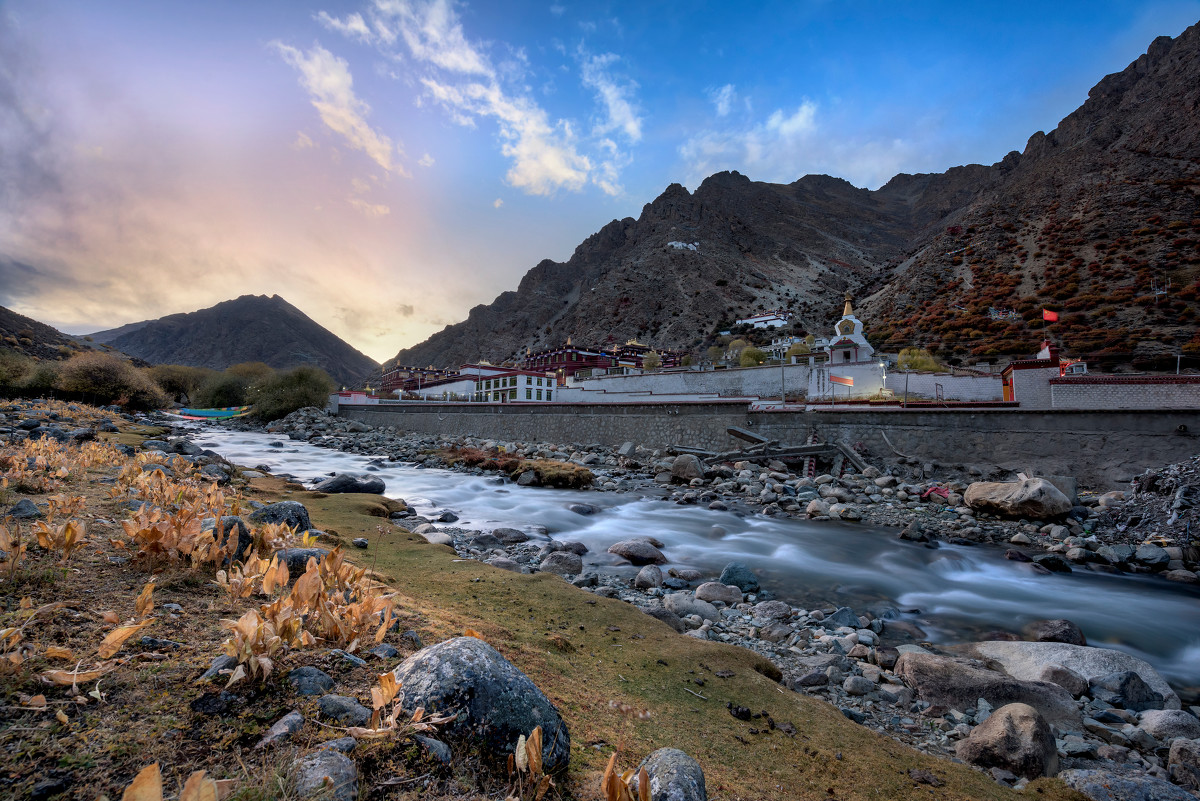
Useful Travel Tips
- The admission fee for Tsurphu Monastery is 45CNY per person and its opening hours are from 09:00 am to 14:00 pm, please make sure you reach there in time.
- With an altitude of 4,300m, to avoid high altitude sickness, it is highly recommended to spend 2-3 days to acclimatize the altitude before heading to Tsurphu Monastery.
- Restaurants or real hotels are not available near Tsurphu Monastery, there is only a small guest house opposite the Assembly Hall, offering very basic rooms and closed sometimes. We would recommend you to bring your own food or snacks with you and return to Lhasa for overnight stay.
- Tsurphu Monastery serves as the starting point of the Tsurphu Yangpachen trek. For the lofty trekkers, this is one of the ideal trekking routes in Tibet well-balanced the culture and wilderness activities.


